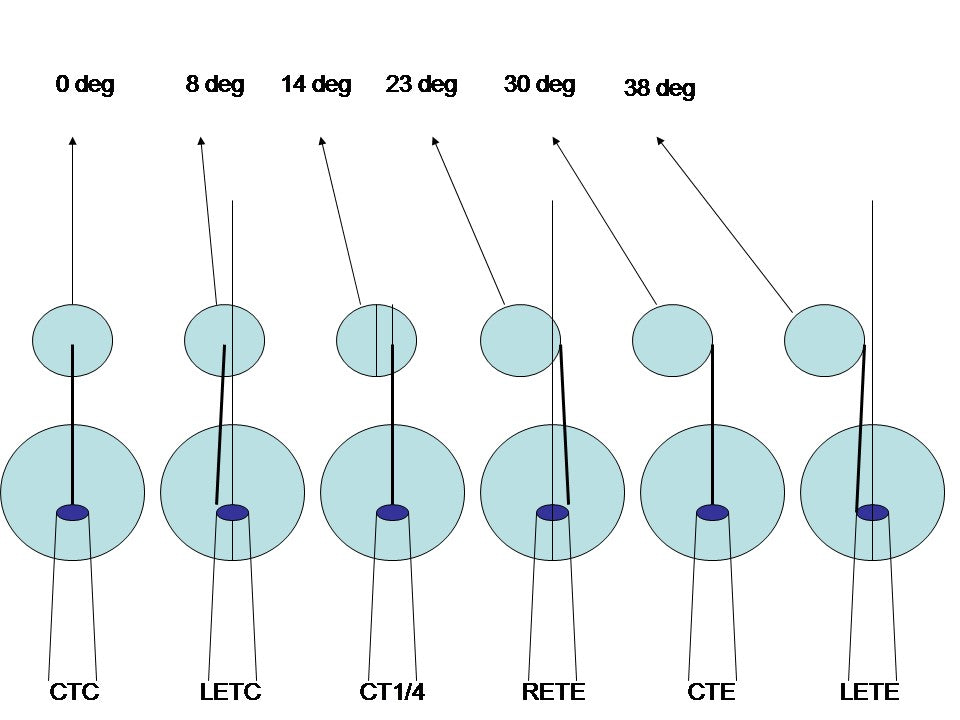Mastering Billiard Shot Angles: The Complete Guide to Fractions and Cue Ball Control
Billiards, or pool, is often seen as a game of precision, strategy, and patience. While luck can sometimes play a small role, true mastery of the game comes from understanding angles, spin, and speed. One of the most important concepts for any player—whether beginner or advanced—is shot fractions. The image above perfectly illustrates how different levels of contact between the cue ball and object ball affect the shot’s outcome.
In this article, we’ll break down these shot fractions, explain how they work, and show why learning them is a game-changer for anyone who wants to improve their pool skills.

What Are Shot Fractions in Pool?
When you hit the cue ball toward another ball (the object ball), the two balls make contact at a specific point. The amount of overlap between the cue ball and the object ball is called the fraction of the hit.
-
A full hit means the cue ball strikes the object ball straight on, covering its entire surface.
-
A thin hit means the cue ball only grazes the edge of the object ball.
By controlling these fractions, you can decide exactly where the object ball will go and how the cue ball will react after contact.
Breaking Down the Fractions
The diagram shows nine common types of contact, ranging from full ball hits to very thin cuts. Let’s go through each:
1. Full Ball Hit (Straight Shot)
-
What happens: The cue ball strikes the object ball dead center.
-
Result: The object ball travels in a straight line, and the cue ball often stops or follows through depending on spin.
-
Use case: Great for pocketing straight shots or playing safe by leaving the cue ball in place.
2. ⅞ Ball Hit
-
What happens: Almost a full hit, but slightly off-center.
-
Result: The object ball moves straight, while the cue ball drifts slightly to one side.
-
Use case: Helpful when you need to pocket a ball but also position the cue ball for your next shot.
3. ¾ Ball Hit
-
What happens: The cue ball overlaps 75% of the object ball.
-
Result: The object ball travels at a slight angle, while the cue ball deflects noticeably.
-
Use case: Common in setups where the pocket isn’t directly aligned.
4. ⅝ Ball Hit
-
What happens: A little more than half coverage.
-
Result: The object ball goes toward the pocket at a sharper angle, while the cue ball deflects wider.
-
Use case: Key for angled shots in 9-ball where precision is crucial.
5. ½ Ball Hit
-
What happens: Equal overlap—cue ball hits the object ball right down the middle.
-
Result: The object ball deflects at about a 30° angle.
-
Use case: Very common in gameplay. Mastering this fraction unlocks consistency in cut shots.
6. ⅜ Ball Hit
-
What happens: Slight overlap—cue ball hits only 38% of the object ball.
-
Result: The object ball cuts at a much sharper angle toward the pocket.
-
Use case: Great for side pocket shots or avoiding clusters.
7. ¼ Ball Hit
-
What happens: Cue ball clips just a quarter of the object ball.
-
Result: Object ball travels at a wide angle, cue ball deflects strongly.
-
Use case: High-precision shots, often used in safety play.
8. ⅛ Ball Hit
-
What happens: Cue ball barely overlaps with the object ball.
-
Result: Object ball travels at an extreme cut angle.
-
Use case: Used in trick shots or when no direct pocket path is available.
9. Very Thin Hit (Extreme Cut)
-
What happens: The cue ball just grazes the edge.
-
Result: The object ball may still drop if aimed correctly, but it’s one of the hardest shots to pull off.
-
Use case: Often used as a last resort in competitive play.
Why Fractions Matter in Pool
Mastering fractions is essential because it lets you:
-
Pocket balls consistently – You’ll know how much of the ball you need to hit for each angle.
-
Control the cue ball – After impact, the cue ball’s path changes depending on the fraction.
-
Plan your next shot – By predicting both the object ball and cue ball’s movements, you can set yourself up strategically.
-
Play safeties effectively – Sometimes, the best move is not pocketing a ball but leaving your opponent stuck. Fractions give you this control.
Pro Tips for Practicing Fractions
-
Use training balls or stickers – Some practice balls come with marked targets to help you aim at specific fractions.
-
Work on half-ball shots first – These are the foundation. Once mastered, move to thinner hits.
-
Film your practice sessions – Reviewing your angles helps you notice errors.
-
Slow down your stroke – Rushing reduces accuracy. Smooth, steady hits improve fraction control.
How Fractions Apply in Popular Pool Games
-
8-Ball: Fractions help in breaking clusters and pocketing tough shots when balls block the direct path.
-
9-Ball: Precision is everything. Many shots require thin cuts, making fraction mastery essential.
-
Straight Pool: Controlling cue ball position after every shot demands understanding fractions perfectly.
Final Thoughts
Billiards isn’t just about power—it’s about precision. Understanding and practicing shot fractions can completely transform your game. From the basic full hit to the nerve-wracking thin cut, each fraction teaches you more about how the cue ball and object ball interact.
The next time you line up a shot, think about fractions. Over time, what looks complicated will become second nature, and you’ll start sinking shots—and controlling games—like a pro.


